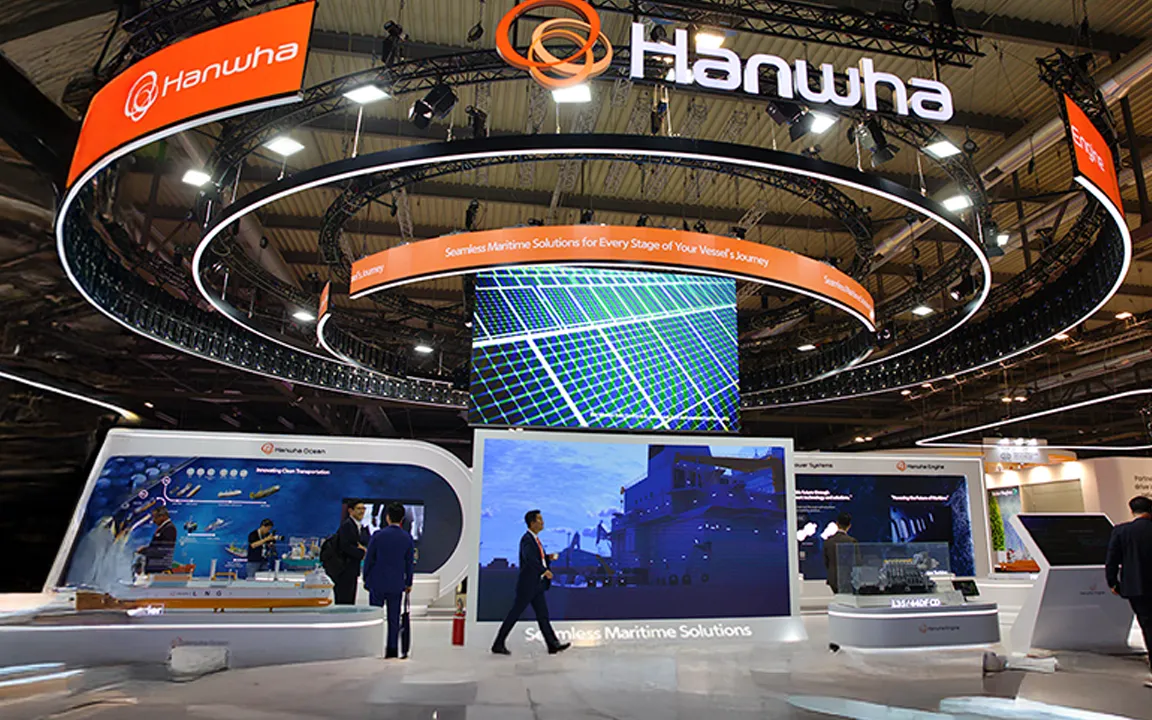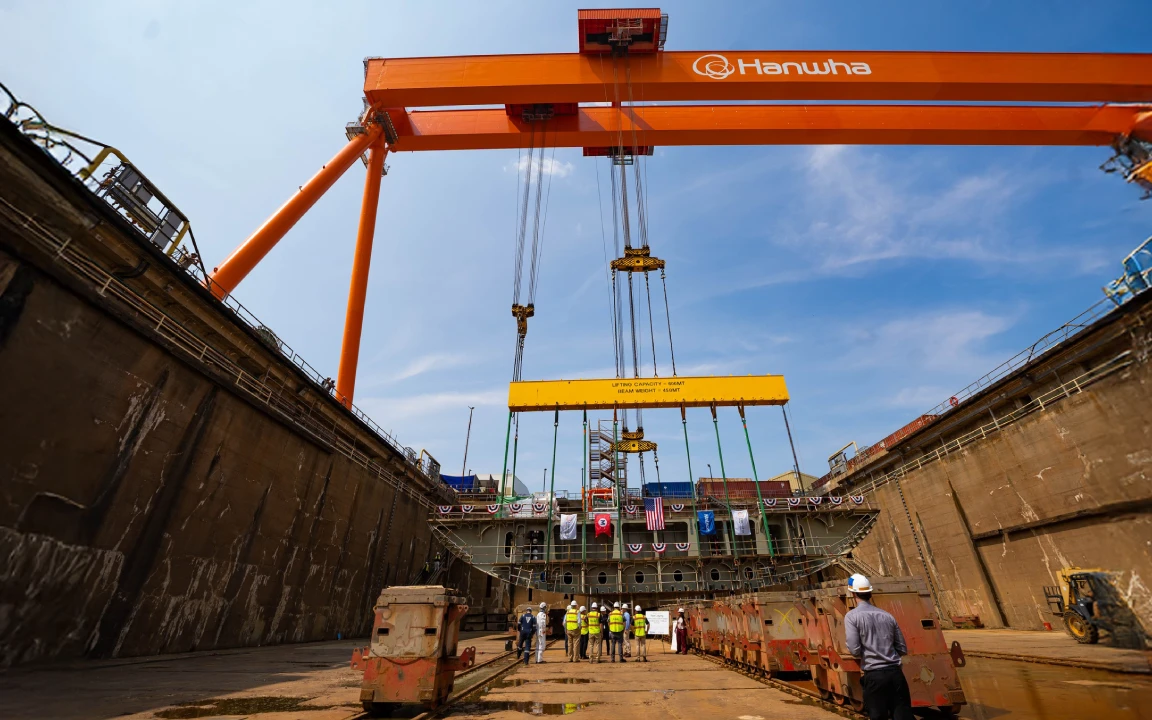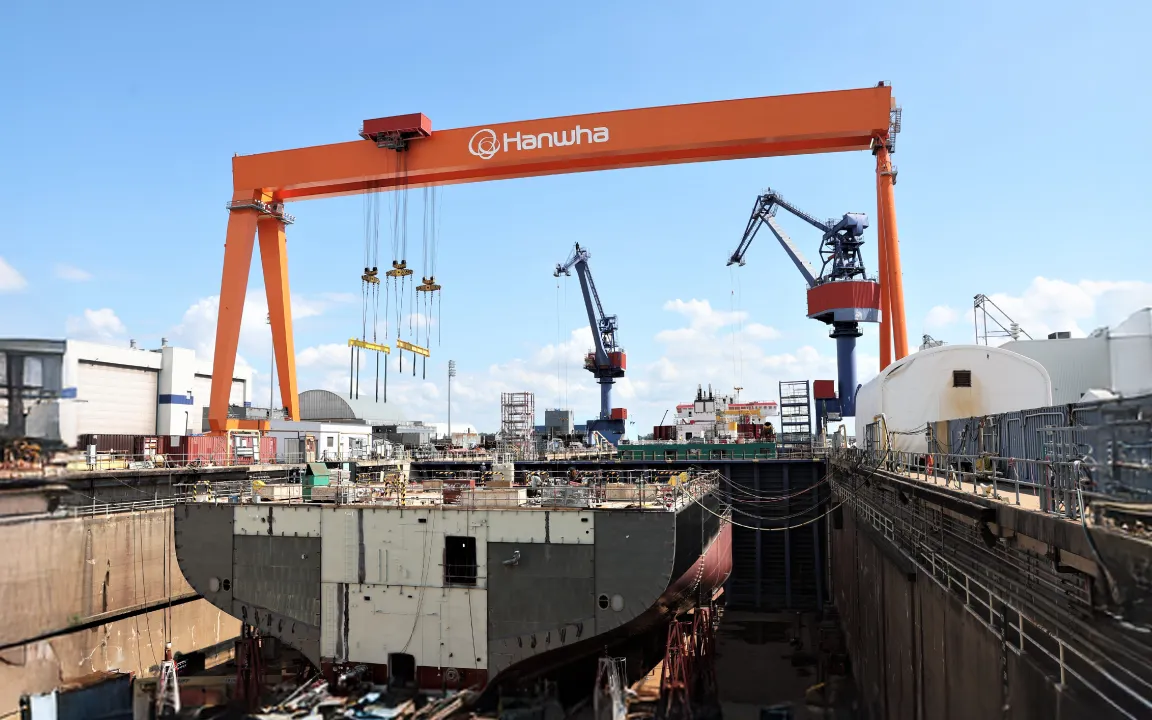Restoring America’s maritime power

This content was authored by Michael Roberts, a Senior Fellow at the Hudson Institute where he founded the American Maritime Security Initiative. Mr. Roberts previously served as General Counsel and a Senior Leader at Crowley Maritime and Chairman of the American Maritime Partnership.
On March 4, 2025, President Donald Trump addressed a Joint Session of Congress for the first time in his second term. An hour and 20 minutes into his speech, he declared:
“To boost our defense industrial base, we are also going to resurrect the American shipbuilding industry, including commercial shipbuilding and military shipbuilding…We used to make so many ships. We don’t make them anymore very much, but we’re going to make them very fast, very soon. It will have a huge impact.”
The Administration followed this commitment with an Executive Order in early April outlining several initiatives. Later that month, the U.S. Trade Representative announced sweeping penalties against China’s shipping and shipbuilding industries. At the end of the month, a bipartisan, bicameral group in Congress introduced the SHIPS For America Act, designed to overhaul U.S. maritime policy.
Taken together, these actions would reverse decades of neglect that have weakened America’s commercial maritime sector and left it trailing global rivals. With sustained follow-through and active engagement by U.S. and allied maritime leaders, they could transform America’s maritime industry into a true strategic strength.
The timing is notable as the U.S. Navy marks its 250th anniversary. America has often relied on maritime power in times of crisis. While the Navy remains the world’s most powerful, today’s threats underscore that maritime power extends beyond warships—it includes commercial shipping, shipbuilding, and supporting infrastructure. U.S. mariners sailing under the American flag strengthen supply chain security and bolster the mariner reserve system. American shipyards producing tankers, containerships, LNG carriers, and other vessels deepen the industrial base, expand expertise, and provide flexibility in times of conflict.
These initiatives are not symbolic. They respond to a geopolitical reality unlike any since World War II. China now poses the most serious challenge to U.S. global leadership since the Soviet Union—but with a crucial difference. Unlike the Soviets, China has made domination of both military and commercial maritime domains a central element of its strategy.

The challenge is stark. Chinese shipyards deliver roughly three vessels to its Navy for every one ship delivered to the US Navy by American shipbuilders. They achieve this by combining low-cost labor, massive supply chains and economies of scale thanks to its state-supported dominance of commercial shipbuilding. Last year, China secured about 75% of global new ship orders, while South Korea and Japan together claimed only 20%. Just five years ago, Korea and China were neck-and-neck at about 37% each.
Meeting this challenge requires America to expand and diversify its shipbuilding base, particularly by regaining a foothold in commercial shipbuilding. Effective collaboration with allies is essential. A promising example came in August at the christening of a new training ship at Philly Shipyard in Pennsylvania. Hanwha, one of South Korea’s leading shipbuilders, acquired Philly in 2024. The company recently announced plans to expand and modernize the yard, which would significantly raise annual capacity.
Hanwha’s expansion plan will create hundreds of skilled U.S. jobs and transfer world-class shipbuilding technology to America. This not only strengthens U.S. commercial shipbuilding but also positions Philly to compete for Navy contracts. Because the work must be performed domestically—and because Hanwha owns the yard—the company has every incentive to ensure its success.
As the Trump Administration and a bipartisan coalition in Congress have recognized, America has a long way to go to meet the maritime challenges of today. The broad initiatives they have proposed reflect a three-part strategy. First, leverage America’s strength as the largest importing nation to blunt China’s continued march to maritime dominance. The threat of penalties on Chinese ships calling at US ports has already reduced the value of those ships on the world market, and made ships built in Korea, Japan and other allied countries (and eventually America itself) more attractive in international markets.
Secondly, grow and modernize America’s commercial shipping and shipbuilding capabilities. Triple the US flag fleet trading internationally so that America can meet basic maritime logistics needs if American troops are ever forced into a Western Pacific conflict. Phase in a requirement that state-of-the-art ships in that fleet be built in American shipyards, providing steady demand to attract investment and spur the development of world-class shipyards. This demand-driven approach forms the backbone of the Strategic Commercial Fleet Program – the central element of the proposed SHIPS For America Act. Stronger incentives – such as tariff discounts – for shippers that “Ship American” will be critical to the program’s success.
And third, deepen cooperation with allies to achieve these objectives. Hanwha’s expansion plan in Philly shipyard is precisely what the Trump Administration and Congressional leaders might have hoped for. Just as the U.S. can enhance Korea’s security in energy and other sectors, Korea’s expertise in shipbuilding can help restore America’s maritime strength.
Turning America’s maritime industry into a strategic asset will require more than rhetoric. The early steps—Executive Orders, congressional initiatives, and private-sector investments—are encouraging. But lasting success will depend on sustained commitment and a clear understanding: maritime power is national power.
This content was produced in partnership with Forbes BrandVoice.
Get the latest news about Hanwha, right in your inbox.
Fields marked with * are mandatory.
- Non-employee
- Employee






